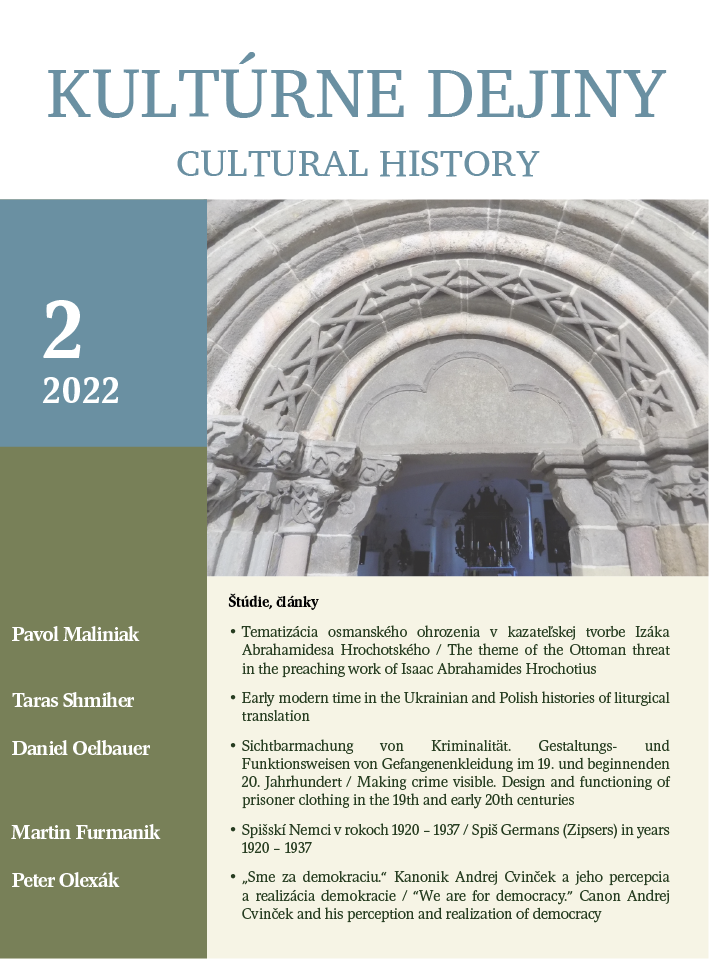Sichtbarmachung von Kriminalität. Gestaltungs-und Funktionsweisen von Gefangenenkleidung im 19. und beginnenden 20. Jahrhundert
Making crime visible. Design and functioning of prisoner clothing in the 19th and early 20th centuries
Author(s): Daniel OelbauerSubject(s): History, Social Sciences, Psychology, Sociology
Published by: VERBUM - vydavateľstvo Katolíckej univerzity v Ružomberku
Keywords: prison; prisoner clothing; penal system; Bavaria; Thuringia; Saxony
Summary/Abstract: Clothes make the man. This is especially true for those who are outside the norm, such as prisoners. In her study of prison violence, Bereswill emphasizes that the misappropriation of clothing through threats is part of everyday prison life. On the one hand, this strengthens the position in the prisoner hierarchy. On the other hand, the need for new clothes is also satisfied. A discussion of prisoner clothing, if one wants to disregard the concentration camp prisoner clothing, has so far only been rudimentary. The reason for this seems to be that a more extensive study of clothing does not represent a worthwhile research object due to “its everyday banality”. There are empirical, contemporary-oriented works on clothing in prison from a cultural and legal perspective. They dealt with the functions and meanings of clothing and fashion in women's prisons. Ash's study of the development of prison clothing from a historical perspective with contextual references to legal, social and, in particular, fashion history refers to the Anglo-American world. In her analysis of striped concentration camp clothing, Schmidt provides some information on the history and development of prisoner clothing in German prisons in the 19th and 20th centuries. Due to their respective focus of interest, the studies by Ash and Schmidt lack a more detailed reference to the penal system, which Einsiedler emphasizes very clearly. The following investigation approaches prisoner clothing in the context of their design and functionality, which has so far received little attention. The central thesis is that prisoner clothing serves the purpose of prison-specific rationalization and enforcement of prison discipline in the sense of the concepts of Foucault and Goffman. The focus is on the following questions: What was the prisoner’s clothing made of and what did it look like? Which “general” functions did it fulfill and which further functions did it fulfill in the context of the prison? What were the implications of this for the prisoners? Were these subject to change?
Journal: Kultúrne dejiny
- Issue Year: 13/2022
- Issue No: 2
- Page Range: 226-247
- Page Count: 22
- Language: German

